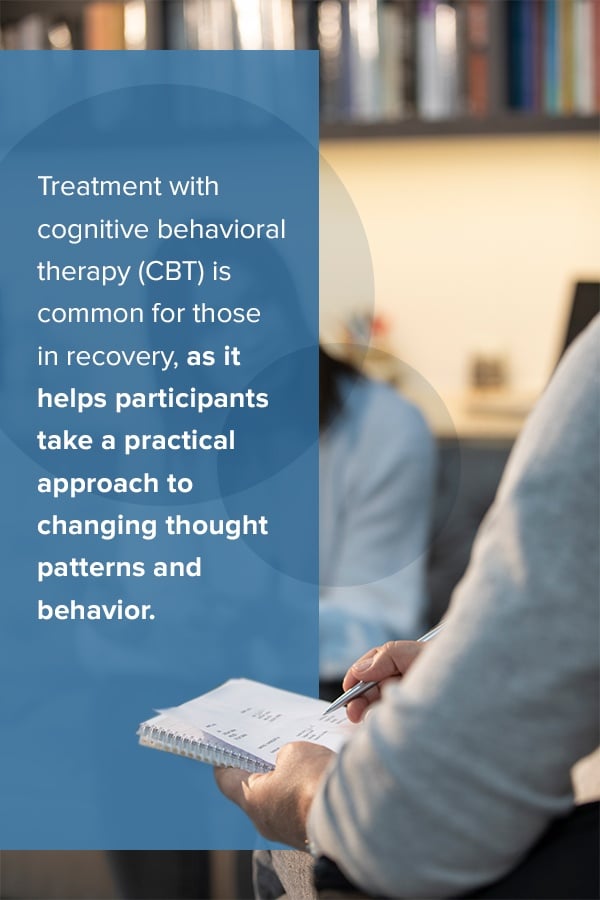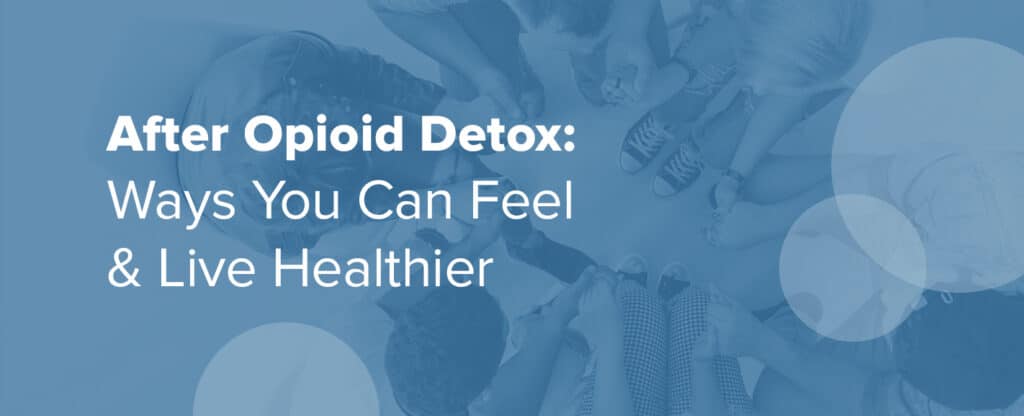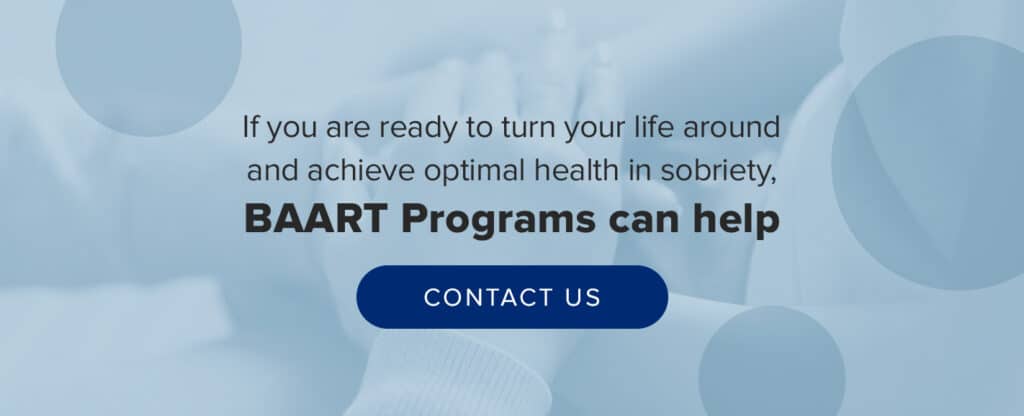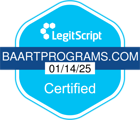Regardless of whether they’re legally prescribed or illicitly obtained, opioid drugs are incredibly powerful and interfere with the body in a multitude of ways. The courageous decision to seek treatment for opioid addiction and undergo detox can save lives, but many people don’t know what to expect after detox is over and recovery has begun. It’s not enough to go back to your old lifestyle and unhealthy habits if you want to truly succeed in recovery. To help get you on the right track, we’ve put together this guide offering several tips for living your healthiest life in recovery from opioid addiction.
How Most People Feel After Opioid Detox and Recovery
The starting point of recovery is the elimination of opioids from the body. This process is called detoxification, but it’s crucial to distinguish between safe, controlled methods of detoxification and the often dangerous “detox programs” many addiction treatment centers offer. The goal of these opioid detoxes is to eliminate opioids as quickly as possible, regardless of the likely adverse effects.
Aggressive detox can significantly heighten the unpleasant side effects experienced as the body recovers from constant exposure to opioids, and make withdrawal symptoms worse. It is much safer to undergo treatment with methadone or buprenorphine, whether it is a maintenance program or a taper plan. This form of treatment helps minimize the effects of withdrawal as you stop using the opioid of abuse. However, you may still experience some challenging symptoms as you cut off opioid use completely.

1. Drug Cravings
The No. 1 issue people must address and cope with after opioid detoxification is cravings for the drug of abuse. Proper withdrawal management helps suppress and minimize withdrawal, and medications such as buprenorphine and methadone can help lessen cravings. However, a desire for the drug you formerly abused will persist.
Drug cravings typically lessen over time, but they can become more or less severe at seemingly unexpected times. Stress is a significant source of drug cravings, as many people begin abusing drugs as a way to avoid stress in the first place. While drug cravings are an unavoidable part of recovery, the tips we discuss later on will help you minimize them and cope with them when they occur.
2. Emotional Volatility
Handling the dizzying array of emotions you will feel is a process everyone goes through in recovery. Opioids have a powerful, complex impact on emotional centers in the brain, including inhibition of avoidance-oriented emotions such as fear and sadness. Due to these effects, many people find that abusing opioids dulls emotional pain as well as physical. Without the emotional suppression of opioids, it’s natural to experience heightened emotions in the earlier phases of recovery.
Many people feel like their emotions are too large or out of control, which can cause a feedback loop of fear and anxiety. However, adopting new coping mechanisms learned from therapy and keeping physical factors like blood sugar in check can help you develop a new relationship with your feelings.
3. Need for Purpose
Addiction of any type closes people off from the rest of the world and leads to a loss of purpose in life. Someone addicted to opioids is usually not interested in things like volunteering or starting a new program at work, because they are primarily concerned with obtaining more opioids to avoid entering withdrawal. After weeks or months, sometimes years, a person’s sense of purpose in life may disappear altogether.
It’s common to feel lost, directionless and unsure of your place in the world in the beginning stages of recovery. Passion and purpose begin to return as you become healthier in body and mind.
Post-Acute Withdrawal Syndrome (PAWS)
One concern in recovery from opioid addiction is post-acute withdrawal syndrome. PAWS is a set of withdrawal symptoms that persist after the acute phase, for weeks or months after detoxification. These post-opioid detox withdrawal signs are generally cognitive and emotional rather than physical, and include:
- Difficulty learning, solving problems or remembering things
- Irritability and anxiety
- Depressed mood
- Difficulty socializing and maintaining relationships
- Feeling apathetic or pessimistic
- Trouble sleeping
These symptoms can interfere with the ability to perform daily activities, but employing healthy coping strategies can minimize the impact.
The Good, the Bad and How to Improve
It’s essential to evaluate the positives, negatives and opportunities of your recovery from opioid addiction as you strive to live a healthier life.
- The good: You’ve chosen to seek help for your addiction, and you’ve persisted through some of the toughest phases of recovery. You already know you have the strength to get sober, and now it’s a matter of staying that way.
- The bad: Depending on how far along you are in recovery, you may be experiencing symptoms of PAWS or lingering acute withdrawal symptoms like sweats and nausea. You are likely also experiencing powerful cravings at times.
- The opportunity: You now have the tools you need to build a better lifestyle and dramatically improve your physical and mental health.
Keeping a balanced view of your successes and the things you need to work on is vital in making tangible improvements to your life.
5 Ways to Live a Healthier Life After Opioids
When you’ve just begun your journey of recovery, thinking about how to improve your lifestyle can be overwhelming. The good news is, any small improvement you make can help fortify your sobriety. Using any of the following five strategies can help clear your path to healthier decisions after opioids.

1. Improve Your Nutrition
There is a direct correlation between opioid abuse and poor nutrition. People addicted to opioids often display signs of nutritional inadequacy, including:
- Extremely high fasting insulin levels
- Decreased ability to process carbohydrates
- Vitamin D deficiency
- Obesity
These symptoms are the result of a combination of physical changes due to opioid use, as well as poor eating habits caused by the behavioral aspects of addiction. Most people struggling with addiction do not put in the time or resources necessary to eat a balanced diet, and it results in poorer health overall. On the other side of the coin, proper nutrition is essential in healing the body from substance abuse and even in minimizing drug cravings.
A diet with adequate levels of complex carbohydrates, dietary fat, omega-3 fatty acids and amino acids can reduce cravings by preventing low energy levels and ensuring the brain has everything it needs to produce mood-stabilizing chemicals. To achieve nutritional balance, you will need to devote special attention to your diet.
Two excellent methods for improving your diet are meal planning and meal prep. You can take a rigid approach and choose to plan out every meal for the next week or more, or you can set a goal to plan and cook at least a specific number of meals per week if you prefer to be more flexible. Taking the next step and preparing those meals in advance on the weekends has the benefit of saving you time and removing excuses to make poor food choices when you’re feeling tired and unmotivated.
2. Prioritize Sleep
Sleepless nights are some of the worst parts of withdrawal, but sleep is essential to maintaining your health. A study from Penn State examined the effects of sleep quality and lack thereof on people in recovery from opioid addiction, and found that people who get less quality sleep experience more cravings and worse mood. While you may struggle with getting to sleep or staying asleep, prioritizing this element of recovery is critical. These tips can help you improve your ability to get quality sleep in recovery:
- Create a comfortable, dark environment to sleep in.
- Consider using a white noise machine if noise in the environment disturbs you.
- Choose a consistent time to go to sleep and to wake up, even on weekends.
- Don’t nap during the day.
- Reduce or eliminate caffeine intake, and don’t consume caffeine after 3 p.m.
- When you exercise, do it early in the day.
- Keep a journal by your bed to help record sleep patterns and disturbances.
- Learn and use techniques to promote relaxation, such as meditation or breathing exercises.
- Avoid doing things other than sleeping in bed, such as eating or watching TV.
- Stay away from heavy meals before bed.
- Create a bedtime routine and follow it every day.
Sometimes, you won’t be able to get to sleep for a while, no matter what you do. If you find you’re not drifting off after 30 minutes in bed, get up and perform a relaxing activity in dim light until you start feeling sleepy. If your sleeping problems remain consistent, consider taking a melatonin supplement to induce sleepiness naturally.
3. Incorporate Exercise
Exercise, in combination with proper nutrition, can help reduce cravings as well as boost your mood. Studies performed on rats have demonstrated that regular swimming and access to an exercise wheel reduce voluntary self-administration of intoxicating substances. One small study on humans had people who misused substances participate in group exercise three times weekly. A year later, three-quarters of the participants reported decreased substance use or abstinence.
The amount of exercise recommended per week by the Department of Health and Human Services is as follows:
- 150 minutes of moderate aerobic activity, 75 minutes of vigorous aerobic activity or a combination of the two
- Two sessions of strength training for all major muscle groups
It’s not always easy to get enough exercise, and it can be particularly challenging if you became addicted to opioids due to chronic pain issues. If, for any reason, you’re not used to getting much or any exercise, it’s OK to start small with walks around the block or a few basic bodyweight exercises at home. Anything you can do to get the blood flowing and increase your heart rate will help improve your health over time.
4. Address Mental Health
During treatment, you likely underwent intensive therapy or substance use counseling to identify the roots of your addiction and learn healthy coping mechanisms for use throughout your recovery. For many people, ongoing therapy can be instrumental in maintaining emotional stability and continuing progress in improving mental health. Even if you choose not to pursue further counseling, it’s critical to keep an eye on how you are feeling and processing your recovery.
Journaling is an excellent way to record the state of your mental health and track it over time. Many people find taking notes before bed helps them process the day and identify any issues they need to resolve. You can approach it with diary-style entries, or quickly jot down a few thoughts or feelings. What matters is that you don’t lose sight of how you are feeling and growing during recovery.

If you find you are experiencing depression or anxiety related to PAWS, it’s essential to seek professional help to ensure the symptoms don’t lead to poor decisions or relapse. Treatment with cognitive behavioral therapy (CBT) is common for those in recovery, as it helps participants take a practical approach to changing thought patterns and behavior. CBT is usually a short-term form of therapy, but it can equip you with healthy coping strategies you can use for the rest of your life.
5. Integrate Socialization and Activities
Getting back into the social scene can be nerve-wracking in recovery. Socialization is essential for good mental health, but you may have to find a whole new set of people to hang out with if your previous friends used opioids or enabled you to use them. One way to find sober socialization is through a recovery group like SMART Recovery or a 12-step group. The people you meet in these settings understand what you’re going through and can support your sobriety.
Another option is to pick up a hobby that involves taking classes or meeting up to socialize. Learning a new language or acquiring a new skill can give you common ground on which to build new friendships.
Making time for socializing and activities can be challenging when you are juggling recovery with working or going to school. Remember, you deserve to have fun, and doing things in a social setting is in no way a waste of time. When you’re planning out schedules, be sure that you leave at least a bit of time free for hanging out with friends or doing something else that brings you joy.
A Strong Start to Your Opioid Addiction Recovery
Overcoming opioid addiction is a challenge, and beginning recovery with effective treatment is the best way to improve your chances of success in sobriety. BAART Programs has been offering opioid addiction treatment for more than 40 years, providing our patients with methadone treatment and a buprenorphine program. With medication-assisted treatment, you can avoid the harsh and potentially dangerous process of detox while bringing withdrawal symptoms down to a minimum.
If you are ready to turn your life around and achieve optimal health in sobriety, BAART Programs can help. Call us at 844-341-4040 or contact us online to find the information you need to begin your recovery journey. With the proper treatment, a healthy lifestyle is within your reach.




